The 18 Strangest Versions of Dracula
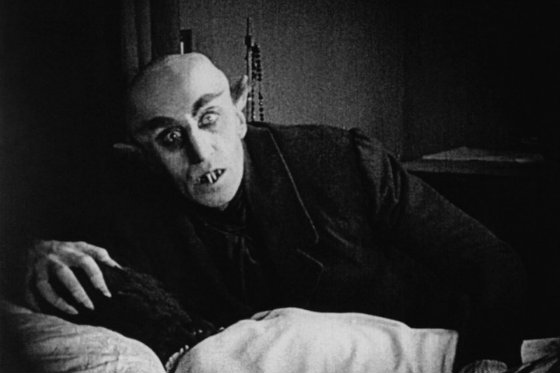 |
Could Bram Stoker ever have imagined, back in 1897, that the character he created would one day be used for everything from pornography to breakfast cereal? It’s hard to imagine that even Bela Lugosi could have guessed that the accent he gave Dracula would still be in use, more than 80 years later, spoofed by George Hamilton, or teaching kids to count, or marketing everything from car insurance to debt-consolidation loans (“because debt sucks!”) to throat lozenges. Thus Dracula Untold, the title of the Drac movie that opened this past weekend, seems almost impertinent. Can there be a variation on the Dracula tale left untold?
Here are 18 strong contenders for the most peculiar takes on Count Dracula in popular culture. Note: These aren’t just vampires in the Dracula mode; all of them had, at minimum, to have either the title “Count” or the prefix “Drac-” or the suffix “-ula” somewhere in their name.
18. Drac from Groovie Goolies
“Whatever happened to my Transylvania Twist?“
That’s Count Dracula’s petulant question in “Monster Mash.” Well, for a while in the early ’70s, it became Saturday morning bubblegum pop by the Goolies, cartoon cronies of Filmation’s Archie spinoff Sabrina the Teenage Witch.
The keyboardist of the group, Drac (voiced by Larry Storch) may remind some viewers of an emaciated version of Wisconsin congressman and Romney running-mate Paul Ryan. But Ryan, if arguably vampiric, isn’t as hip.
17. Dracula’s Daughter
Only one entry under the original Universal Dracula pedigree qualifies as offbeat enough for inclusion here: The Count’s original distaff offspring, and unhappy heir to his vampirism, Countess Marya Zaleska, memorably played by Gloria Holden in this first sequel Universal’s 1931 Dracula.
The Countess yearns to be free of her sanguinary, and sometimes Sapphic, appetites, but as usual, conversion therapy doesn’t take. This moody, restrained melodrama, directed by Lambert Hillyer, is maybe one of the less popular of the Universal monster pictures, but it shouldn’t be overlooked.
16. Canadian Ballet Dracula
That Manitoban Maniac Guy Maddin directed Dracula: Pages from a Virgin’s Diary, a 2002 film version of the Royal Winnipeg Ballet’s staging of Mark Godden’s acclaimed ballet of the Stoker tale. Maddin shot the film as a faux-silent in grainy black and white – though a few splashes of color are daubed in here and there, like the red lining to Drac’s cape, for instance, or the red in a woman’s cheeks after she gets a transfusion, green money, gold coins, etc.- with occasional punchy subtitles (“CUCKOLD’S COUNTERSTRIKE!”).
Thematically this version, made for Canadian television but given a theatrical release elsewhere, emphasizes the xenophobic aspects of the story – the “Eastern-ness” and “Otherness” of the Count, here performed by the insolently sexy Wei-Qiang Zhang – and also the anti-sexual terror of the vampire hunters. Van Helsing (the striking David Moroni, who calls to mind Laurence Olivier) and the suitors of Drac’s victims Lucy (Tara Birtwhistle) and Mina (CindyMarie Small) are ferociously phallic & invasive with their, er, stakes. They even take a drill bit to poor Renfield’s skull to get information from him. Similarly, when Mina shows her sexual passion to the convalescing Harker (Johnny A. Wright) in a key duet, he reacts with bewilderment even to her healthy arousal.
Anyone who has read Stoker’s novel will be hard pressed to deny that it consists of about 90% obsessive horror at female sexuality, with the other 10% being unapologetic terror of foreigners and nonwhite races. But undeniable as this subtext is, the Anne Rice-style romanticizing of the vampire, and the arch parody of Victorian sexual attitudes which Maddin and Godden indulge in here mitigates the story’s power. It comes across as a politically correct winking, rather than an honest exploration.
That said, most of the jokes in Dracula: Pages from a Virgin’s Diary do work, and the dreamlike beauty of the imagery casts an erotic spell. It may be the most visually lovely Dracula movie since the Universal series of the ’30s, and Godden’s choreography, set to the music of Mahler, is ingenious, vigorous, unpretentiously amusing and lucid as narrative.
15. Vinyl Dracula from Famous Monsters Speak
Each side of this 1963 LP, which was peddled in the back pages of Famous Monsters of Filmland magazine, featured a dramatic monologue, one by the Frankenstein Monster, the other by Drac. The Frankie side doesn’t quite come off, but Dracula, speaking Interview With a Vampire-style to a nosy writer who has disturbed his slumber, is memorable. It was scripted, by the way, by Cherney Berg, author of many spoken-word records for kids and son of Gertrude Berg, of radio’s The Goldbergs.
The Count was voiced by former Dead End Kid Gabriel Dell. A comedian and impressionist after his professional delinquent years, Dell hammed his Bela Lugosi voice, which he had already played for laughs on The Steve Allen Show, to the corny hilt on Famous Monsters Speak. It creeped me out pretty good when I heard it at a friend’s house as a kid.
14. Dell Comics Dracula
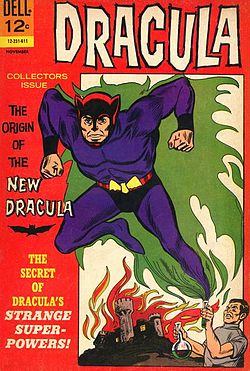 |
A different and unrelated Dell, namely Dell Comics, was responsible for this oddity: Dracula as a superhero. The title character is a descendant of the notorious clan, living in a modern day “little known Middle European country far removed from the fears and worries of a Twentieth Century world constantly on the brink of nuclear war.” The Count, a scientist, is trying to redeem the family name in the world’s eyes by developing a serum to treat brain damage from bat biochemistry: “I must clear the Mark of the Bat with a bat derived healing serum!” He accidentally imbibes a bit of his own serum – thinking it’s “a refreshing glass of mineral water” – and finds himself able to shape-shift into a bat.
As with the Universal Dracula, this leads to a logistical problem – what happens to his clothes during these metamorphoses? Do they just become part of his bat fur?
Anyway, Drac uses his new power to foil a megalomaniacal dictator, conveniently named “Boris Eval,” who invades his country and his castle. Then he gets himself in good shape, and adopts a pretty cool Phantom-like superhero suit, which, in the interest of airtight secrecy regarding his identity, he has custom-made by a tailor in the next town over. He dons this get-up and takes the following solemn pledge:
“I pledge by the strange powers which have become mine to fight against the injustice, corruption, evil and greed which fills this Earth in the hopes that somehow my example will be an example to all men.“
This batty title ran only three issues in 1966 (they were reprinted in 1972). Dell’s attempts, at the same time, at other monster-superhero hybrids – the green-skinned Frankenstein and the black-body-suited Werewolf – fared no better.
13. Dracula’s Dragster
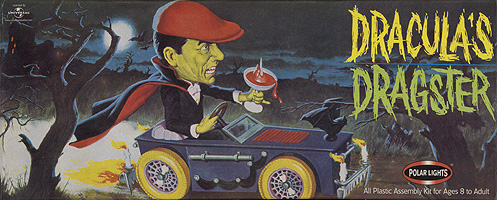 |
Dracula was represented straightforwardly in one of the classic Aurora monster kits of the early ’60s, in which he was seen haunting a dank and bat-infested swamp. A few years later, however, we saw him in a sporty mood, at the wheel of one of the “Monster Rods” – others included “Frankenstein’s Flivver,” “Mummy’s Chariot,” “Wolfman’s Wagon” “King Kong’s Thronester” and “Godzilla’s Go-Kart.” These kits have been affordably reissued by Polar Lights.
Among the nice touches on this coffin-shaped cruiser are candles for headlights – and taillights – bat designs in the spokes, and a bat hood ornament, not to mention the spiffy arterial-red motoring cap on the Count’s head. The martini glass full of red liquid is a disappointment, however. Surely Aurora, even in the ’60s, didn’t endorse drinking and driving?
12. Count Chocula
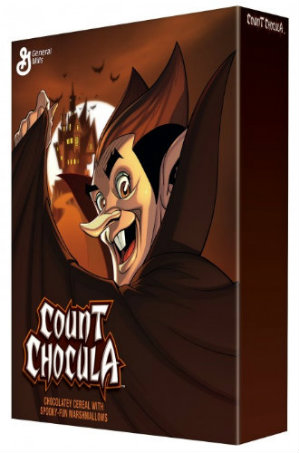 |
The vampire beast craves chocolate cereal bits and marshmallows. It’s one the original Monster Cereals from General Mills introduced in 1971, along with pink Franken-Berry. Spectral blue Boo-berry, lycanthropic Fruit Brute and Fruity Yummy Mummy came later. I have always eschewed chocolate cereals, and thus was a Franken-berry man myself at the time, but a friend assures me this was tasty. In any case, as with Quake to Quisp, Count Choc was essential as the loyal opposition in the self-defining childhood ritual of one’s breakfast preferences.
The cereals are now produced and sold only in Halloween season; this year the box art has been freshened by noted comic artists. Terry and Rachel Dodson are behind Count Chocula’s new look.
11. Bela Bites Betty
Though he played it countless times onstage, Bela Lugosi played his signature role of Count Dracula only twice in feature films, in the original Universal Dracula, and later in Abbott and Costello Meet Frankenstein. But he also menaced Betty Boop in this 1933 Hollywood on Parade short: “You haf booped your last boop!“
A hardcore Lugosi completist might also insist that in Michael Almereyda’s artsy New York vampire flick Nadja of 1994, Lugosi “played” the title character’s father Drac, more than 30 years after the actor’s death. His performance here comes courtesy of public domain footage from White Zombie.
10. Beatula
The first, albeit unauthorized, screen representation of Dracula, redubbed “Count Orlok” in F. W. Murnau’s 1922 masterpiece Nosferatu, was described thusly by none other than Jack Kerouac in a New Yorker Film Society program of 1960:
“The Count Nosferatu has the long hook nose of a Javelin vampire bat, the large eyes of a Rhinolophidae vampire bat, long horsey mouth looking like it’s full of W-shaped cusps with muggly pectinated teeth and molars and incisors like Desmondontae vampire bats with a front tooth missing the better to suck the blood, maybe with the long brush-tipped tongue of the sanguisuga so sanguine. He looks in his hunched swift walk like he probably also has his intestinal tract specially modified in accordance with his nocturnal habits…the general horrid hare-lipped look of the Noctilio…small guillotines in his mouth…the exceeding thinness of his gullet. His hands are like the enormous claws of the Leporinus bat and keep growing longer and longer fingernails throughout the picture.“
Yeah, that’s just how I would have described him, too.
9. Dracula A.D. 1972
Released in the title year, this was Hammer Films trying to give a “mod” spin to their Christopher Lee/Peter Cushing Dracula series. It opens in 1872, long before the 1897 date of the Stoker novel, with Van Helsing (Cushing) and Dracula (Lee) fighting it out again on an out-of-control carriage. It ends badly for both of them, with the Count meeting the business end of a broken wheel spoke.
But a century later, after the opening credits, a Drac disciple with the rock-star-like name of Johnny Alucard (Christopher Neame, looking insufferably pouty and Byronic) leads a group of thrill-seeking Chelsea glamsters in an unholy ceremony in the ruin of a church, and succeeds in re-integrating the vampire prince, who is particularly ungrateful and entitled about it: When his young benefactor says “I summoned you,” he snaps “It was my will.” Typical freakin’ aristocrat.
What’s striking now is how very little Lee was given to do in the film. With the title, one might hope for psychedelic party scenes of the Count mingling with the Mods, but except for the fight in the prologue, Lee, who’s top-billed, spends all of his brief footage in the wrecked church, to which Johnny A. dutifully delivers him such delectable snacks as Caroline Munro, Marsha Hunt and Stephanie Beacham, in return for an equal lack of gratitude, and speaks only a handful of lines. Cushing, as a modern Van Helsing, does the expository heavy lifting.
All that being said, the film is fun early-’70s artifact, and it features an appearance by the American rock ensemble Stoneground. They perform, in a riotous scene early on, at an upper-crust party that’s been crashed by decadent hippies, to the elaborate scandalized horror of the guests.
8. Drakula Istanbul’da
As Dracula Untold points out, the Turks have historical as well as supernatural reasons to resent the Count. This enjoyably old-fashioned 1953 production (“Dracula in Istanbul“), intriguingly shows us the Count from the Turkish point of view. It also includes belly dancing.
The shaven-headed Count, played by Atif Kaptan, looks like a slightly less rodent-ish version of Count Orlok from Nosferatu.
From elsewhere in the exotic East…
7. Dracula in Pakistan
…or, as it really ought to be known to English-language fans, Drakistan. By virtue of its English-language release title, this one qualifies for the list, though the Urdu title is Zinda Laash, or “The Living Corpse.”
Rehan memorably plays the title role, a scientist who turns himself into a classic bloodsucker. As with Drakula Instanbul’da, this 1967 “Lollywood” (Lahore plus Hollywood, get it?) imitation of the Hammer Dracflicks includes some surprisingly erotic dancing.
6. Count Frightenstein
Sure, his name is a play on “Frankenstein.” But his title is Count, and his characterization is clearly pure Lugosi.
The thing about this fondly-remembered Canadian syndicated kids’ show of 1971 is that the title wasn’t vain boasting. In no small part due to the performance of Billy Van as the Count, it often really was hilarious.
5. Sony’s Nintendo’s Francis Ford Coppola’s Bram Stoker’s Dracula
The player is Jonathan Harker, trying nix the Count and rescue his beloved Mina, in this Sony version of Francis Ford Coppola’s defiantly mis-titled take on the Dracula legend. The Count does a Benjamin Button and becomes younger; he also shows up in bat and wolf form, and a variety of other spooky perils threaten Harker.
This was number 21 on Flux magazine’s list of the 25 worst videos game in the ’90s. But this stake missed the heart. Flux is long gone, and you can still buy this game on Amazon.
4. Dracubecca
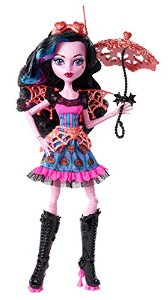 |
Many parents were uncomfortable with the Bratz, feeling that the name was essentially a little-girl euphemism for, well, Slutz – and that the popular doll line pushed overt sexuality to preteen and younger girls. But when Mattel – whose signature doll Barbie was getting her narrow little butt kicked by the Bratz about a decade ago, sales-wise – introduced the Monster High dolls in 2010, adding a classic monster theme to roughly the same style as the Bratz, it somehow didn’t seem as unsavory.
The conceit of Monster High is that the dolls are the children of favorite monsters. Frankie Stein is obviously the descendant of the Monster and his Bride, Cleo de Nile is daughter of the Mummy, Lagoona Blue is the daughter of the Creature of the Black Lagoon, Spectra Vondergeist is the daughter of a ghost, and so forth. The usual dizzying array of accessories, kid novels, coloring books, backpacks, direct-to-video movies and other merchandise has arisen around the doll line.
Draculara, the vegetarian and blood-squeamish daughter of Dracula, is part of this franchise as well. But she’s no match in strangeness for Dracubecca, one of the Monster High “Freaky Fusion” characters – a steampunk-ish hybrid of Draculara and Robecca Steam, the robot daughter of a mad scientist. She might be called a Clockwork Blood Orange. Or not.
3. Old Dracula
“David Niven as Dracula” should be all you really need to hear to acknowledge the right of this swinging London vampire spoof to be on the list. But it goes well beyond that in peculiarity. Originally called Vampira, the film was retitled for the American market in hopes of drafting on the popularity of Young Frankenstein. Niven is a fussy, sword-cane-wielding Count who revives his beloved vampire bride using an infusion of blood from a black woman, so that she arises as the lovely Laugh-In alumnus Teresa Graves.
Although his bride is delighted by her new hue, Drac proves surprisingly narrow minded, and spends the rest of the picture trying to re-blanch her. Spoiler alert – not only is he unsuccessful, but the bite of his beloved has the same effect on him. Yes, if you have always coveted the sight of David Niven in blackface, this is the movie for you. In terms of a racially-oriented vampire flick, this one seems like far more of a museum piece than 1972’s Blacula, which can still deliver a creepy old-school chill.
But Old Dracula is good-natured museum piece. Graves is so charming that it’s sad to think she left show business not long after completing this, in the wake of a religious conversion that probably left her disapproving of sex farces of this sort.
Also to the movie’s credit, the cast includes Freddie Jones and Monty Python‘s Carol Cleveland.
2. Count von Count
Despite his nobility of dress and bearing, the longtime Sesame Street regular, originally performed by the late Jerry Nelson, gets his title, he claims, not from any blue bloodline but from his enthusiasm. As he sings: “You know that I am called The Count/Because I really love to count/Sometimes I sit and count all day/But sometimes I get carried away…” After indulging his OCD-like need to inventory objects, he lets out a sinister chortle, atmospherically accompanied, Frau-Blucher-style, by thunder and lightning.
Believe or not, there is, probably unintentionally, some basis in vampire folklore for his behavior. In some cultures, scattering mustard seeds outside your door was considered a defense against vampires, as the poor creature would feel compelled to count each individual seed. “7,038! 7,038 cute little mustard seeds! Hah-hah-hah-hah!” At this point, presumably, he would realize, too late, that the sun was rising, and crumble to dust.
1. Deafula
If I had to pick the most weird-ass movie monster I’ve ever seen, that would be…well, that would be one heck of a contest. But I think the prize might have to go to the title character of Deafula (1975). Even if it weren’t entirely performed in American Sign Language – the first such feature film, it claims – Deafula would still have the incoherent strangeness of a dream.
Shot in black and white in Portland, Oregon, this film is set in an alternative reality in which everybody – police detectives, preachers, TV-news anchors – converses only in ASL (a voice-over translation is provided for the hearing). The movie was written and directed by National Theatre of the Deaf veteran Peter Wechsberg, who also plays the hapless hero Steve, a divinity student who now and then unwittingly transforms into the big-schnozzed vampire Deafula. Superficially, he seems a traditionalist bloodsucker. Somehow he transforms right into evening dress, cape and pointy eyebrows, but, surprisingly, he seems untroubled by sunlight.
Eventually, his story is “explained,” bafflingly, in laborious backstory, and a variety of other characters are introduced. My favorite is Zork (Nick Tuccinardi), possibly the oddest hunchbacked assistant in horror-movie history: he has tin cans on his hands! In this movie’s idiom, a mute: get it?
OK, no doubt there are dozens, if not hundreds, of other candidates. Who have I failed to resurrect?
Previously by M.V. Moorhead:
10 Bizarrely Great Manifestations of Brother Theodore
12 Strange Non-Japanese Manifestations of Godzilla
The Thirteen Greatest Fictional Snails
The Ten Best Fantasy/Sci-Fi/Horror Novels You’ve Probably Never Read
